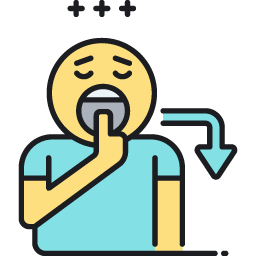The clinic provides inpatient, day-patient and outpatient services and the staff is trained and experienced in the treatment of eating disorders. The treatment team providing inpatient and day-patient care is composed of psychiatrists, psychologists, social workers, nurses, recreational and occupational therapists and research professionals. This multidisciplinary team works with patients to develop a comprehensive and meaningful goal-directed treatment plan in a structured setting. In general, the goal of treatment is to normalize weight and disturbed eating patterns. Patients participate in a variety of groups on the unit which aim to address distorted cognitions and behaviors and help patients develop skills to use after discharge from the hospital. Outpatient therapy may involve participating in a treatment study evaluating a medication or psychotherapy or may commence upon completion of research participation. These sessions typically involve cognitive-behavioral therapy with medication management led by an experienced psychiatrist or psychologist.
Eating disorders such as anorexia nervosa and bulimia nervosaare characterized by serious disturbances in eating behaviors together with great preoccupation with issues of food, weight, body size and shape. While many people worry about what they eat, or how they look, only a few actually have all the necessary signs and symptoms of an eating disorder. If you believe that you or someone you know meets the diagnostic criteria anorexia nervosa or the diagnostic criteria for bulimia nervosa, you may want to contact The New York State Psychiatric Institute's Eating Disorders Research Service for information about resources which may be available to you.
Anorexia nervosa is characterized by self-maintained low weight and loss of menstrual periods accompanied by an intense fear of fatness and a distorted body image. There are two types of anorexia nervosa -- restricting and binge-eating/purging subtypes. Individuals with restricting subtype severely limit their food intake and may exercise excessively. Individuals with binge-eating/purging subtype engage in binge-eating and/or self-induced vomiting, abuse of laxatives or diuretics.
About 95% of patients with anorexia nervosa are women. Most of them develop the disorder in late adolescence or early adulthood. Despite the large number of women who report some sort of eating disturbance, only a small number (0.5-1.0%) actually meet full diagnostic criteria for anorexia nervosa.
The following are required for the diagnosis of anorexia nervosa:
Bulimia nervosa is characterized by binge-eating and compensatory methods of weight control such as vomiting, laxative abuse or exercise, accompanied by excessive concern about body shape and weight. A binge is defined as an episode of eating a much larger amount than most people would in a similar situation and a subjective feeling of loss of control. There are two types of bulimia nervosa - purging and non-purging. Individuals with purging type bulimia nervosa self-induce vomiting or abuse laxatives or diuretics to counteract the effects of binge-eating. Individuals with non-purging type bulimia nervosa fast or exercise excessively following episodes of binge-eating.
About 90% of patients with bulimia nervosa are women. Most of them develop the disorder in early adulthood. Some patients who develop bulimia nervosa may have a history of anorexia nervosa. While many women report various symptoms of bulimia nervosa, only 1-3% of young women meet the fulldiagnostic criteria for the disorder.
The following are required for the diagnosis of bulimia nervosa:
If you cant meet with a provider in person, you can try virtual sessions or online therpay led by an experienced psychiatrist, psychologist or registered dietitian.

Structured treatment is frequently helpful in the treatment of anorexia nervosa. Treatment at most will likely address the patient's difficulty with eating as a first priority.
Virtual Anorexia Treatment
Treatment studies for bulimia nervosa have consistently found that structured, behaviorally oriented treatment is very helpful for breaking the cycle of binge-eating and purging
Virtual Bulimia Treatment
Treatment for binge eating disorder is available to men and women ages 18 and older. Treatment includes individual, personalized therapy.
Virtual Binge Eating Disorder